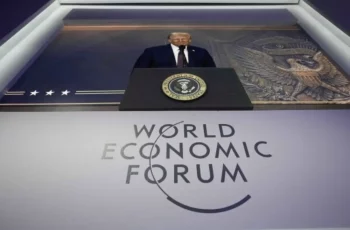
The exchange of strikes between India and Pakistan went beyond disputed Kashmir region.
On the night of May 6-7, India launched targeted missile strikes on the territory of Azad Kashmir (administered by Pakistan) and the Punjab province of the Islamic Republic of Pakistan.
In a press release issued by the Indian Ministry of Defense immediately after the attack (the document is dated 01:44 a.m.), it was said that the Indian Armed Forces “launched ‘OPERATION SINDOOR’, hitting terrorist infrastructure in Pakistan and Pakistan-occupied Jammu and Kashmir… Altogether, nine (9) sites have been targeted…The actions have been focused, measured and non-escalatory in nature… No Pakistani military facilities have been targeted. These steps come in the wake of the barbaric Pahalgam terrorist attack in which 25 Indians and one Nepali citizen were murdered. “
In response, the Pakistani Air Force was alerted, and artillery shelling of Indian military bases in Jammu and Kashmir was launched. According to the first data from the Pakistani side, three Rafale fighter jets of the Indian Air Force were shot down. Later, information was added that the Su–30, MiG–29 and the Heron attack drone were also shot down. In addition, it was said that the headquarters of the Indian armed forces brigade in Kashmir was destroyed, and Indian strongholds were destroyed on the line of control (there is no official border, since both sides do not recognize each other‘s territorial claims), where the Indian military displayed white flags.
It is worth noting that a few days before the incident, it became known that China had supplied Pakistan with a large batch of PL–15 air-to–air missiles, which were installed on JF–17 aircraft, and the squadrons were put on alert. The range of these missiles is 300 km. They were probably used to destroy Indian aircraft.

As for the casualties, Pakistan reported 31 people killed and about 50 more injured. In Muzaffarabad, Pakistani Kashmir, an Indian missile destroyed a mosque and a madrasa.
It is quite indicative that the Indian media quoted the words of Masood Azhar, the leader of the Jaish-e-Mohammed organization, which is located in Kashmir and is known for its anti-Indian activism, that his wife, his older sister and her husband, as well as other relatives (ten people in total) were killed in a missile strike from India. If, from India’s point of view, the operation was directed against terrorists and this organization is viewed by India as a militant group, the position justifying selective strikes that kill civilians, perhaps even those associated with the leaders of a radical organization, still looks rather strange. Moreover, the leader himself remained alive. Most likely, India was trying to copy the methods of the Israeli military, which often use targeted attacks against senior figures in the Palestinian and Lebanese resistance. But in this case, it looks like a clear failure, although the Indian side gives the names of the militant training camps that were allegedly attacked. At the same time, Pakistan immediately rejected this version, saying that international observers and journalists had previously visited these places and they had not seen any “terrorist bases” there.
Beyond that, it should be noted that unlike a similar case in 2019, when Pakistan-administered Kashmir was attacked after a suicide bombing in the Indian part of Kashmir, now more explosions have occurred within the internationally recognized borders of Pakistan – in Muridke, Bahawalpur and Sialkot. By all international standards, this is a clear military aggression, which the Pakistani authorities immediately accused India of.
On the Indian side, 12 people were killed and about three dozen injured. The Indian side did not say anything about the damage, only confirmed the loss of several aircraft.
Prime Minister Narendra Modi announced the urgent meeting of the country‘s National Security Council and canceled foreign visits scheduled for the following week. Notably, civil defense exercises were held in India in the states bordering Pakistan. Apparently, New Delhi was expecting a massive retaliatory strike from Pakistan. It can be assumed that India will plan some new actions against Pakistan.
Pakistan also convened a meeting of the National Security Council, where the military was given complete freedom of action regarding the use of force. The Pakistani leadership has declared its right to use Article 51 of the UN Charter on the right to defense. Pakistani President Asif Ali Zardari, in particular, said that an appropriate response would be given to Indian aggression. Pakistan‘s representative to the UN also informed the Security Council about the details of the incident. The airport in Islamabad has suspended operations and all flights have been diverted to Karachi. Some foreign airlines have suspended their flights to Pakistan and started flying over its territory. In the northern part of India, all airports were also closed until May 10.
Although this is not the first time that military conflicts and exchanges of strikes between the two countries have occurred, the situation is somewhat different now. It recalls the exchanges of missiles and drones attacks between Israel and Iran in 2024, which, despite years of criticism of each other, did not escalate into a full-scale war. However, at the same time, India clearly demonstrates its commitment to a hegemonic policy. Although New Delhi justifies its actions by the need to respond to the terrorist attack, no evidence of Pakistan’s involvement was provided, and the Pakistani side’s proposal to jointly investigate the incident in Pahalgam was ignored. This is reminiscent of the US narrative of the “war on terror,” when Afghanistan and Iraq were bombed, followed by a full-scale invasion. However, India is not the United States, especially considering that New Delhi is trying to position itself as a new leader among developing countries. And despite the good ties between the countries and the personal friendship between Narendra Modi and Donald Trump, it seems that the White House will not support India. Earlier, the United States called for de-escalation, and Trump had previously dismissed the issue in comments on the situation, although on May 7 he announced the need for a cease-fire. India also cannot rely on another proven military partner, Israel, since the Netanyahu regime is currently preparing a new large-scale operation against the Gaza Strip. In other words, New Delhi is unlikely to receive military assistance from these two countries. In addition, given the clear violation of international law, India is losing its credibility among the countries of the Global South, where there are many Muslims and criticism of the Modi government is growing, which is increasingly being called extremist. And although the global ecosystem of Indian media continues to promote the narrative of “Pakistani terrorism,” Pakistan’s much more rational behavior is more sympathetic.
That said, Pakistan can well count on military and technical assistance, at least from China and Turkey. Not to mention financial and diplomatic support from a number of monarchies of the Middle East. The visit of Saudi Arabia‘s Foreign Minister Adel al-Jubeir to New Delhi on May 8 may be aimed at mediating efforts for a ceasefire. His Iranian counterpart Sayyid Abbas Araghchi also arrived in India. Therewith, India‘s actions have united Pakistan‘s political parties, and although some of them continue to call for the release of former Prime Minister Imran Khan, everyone is unanimous about the need to punish the aggressor India and continue the fight.
On the morning of May 8, a number of Indian media outlets started claiming that Pakistan had launched a missile attack on Amritsar, where the Sikh holy temple is located. However, no evidence has been provided for this. This indicates the importance of the media factor in the conflict and the continued manipulation for political purposes. Pakistan has once again denied these allegations. Although the country’s leadership had previously warned that there would inevitably be a response for India‘s actions.










Comments